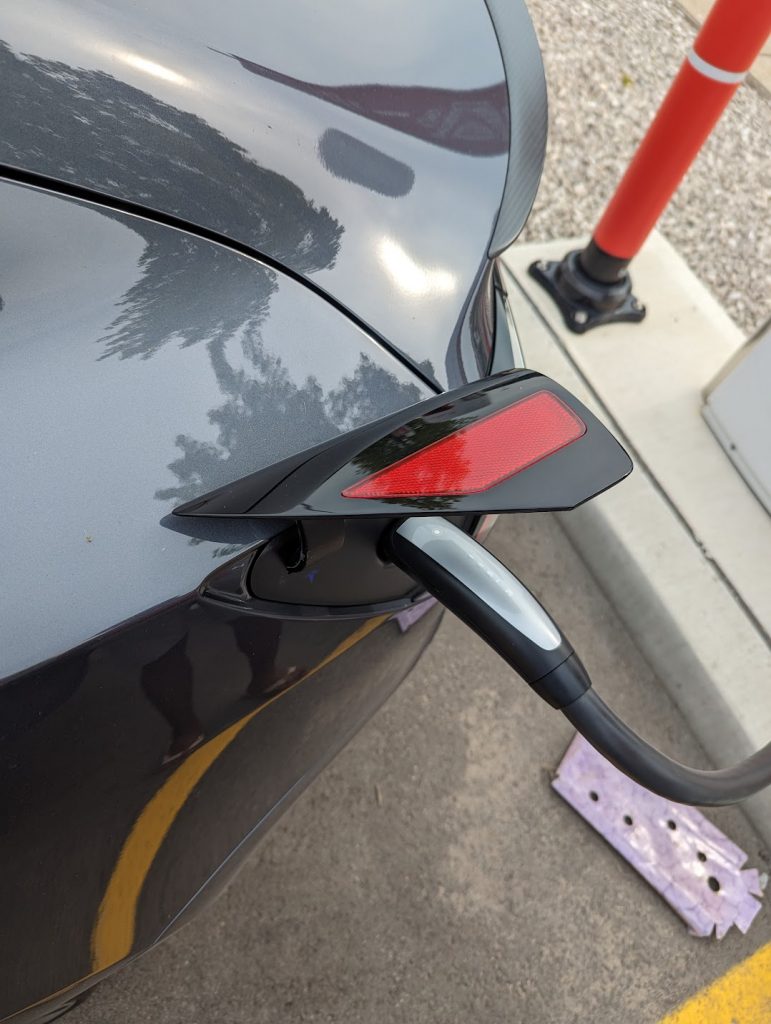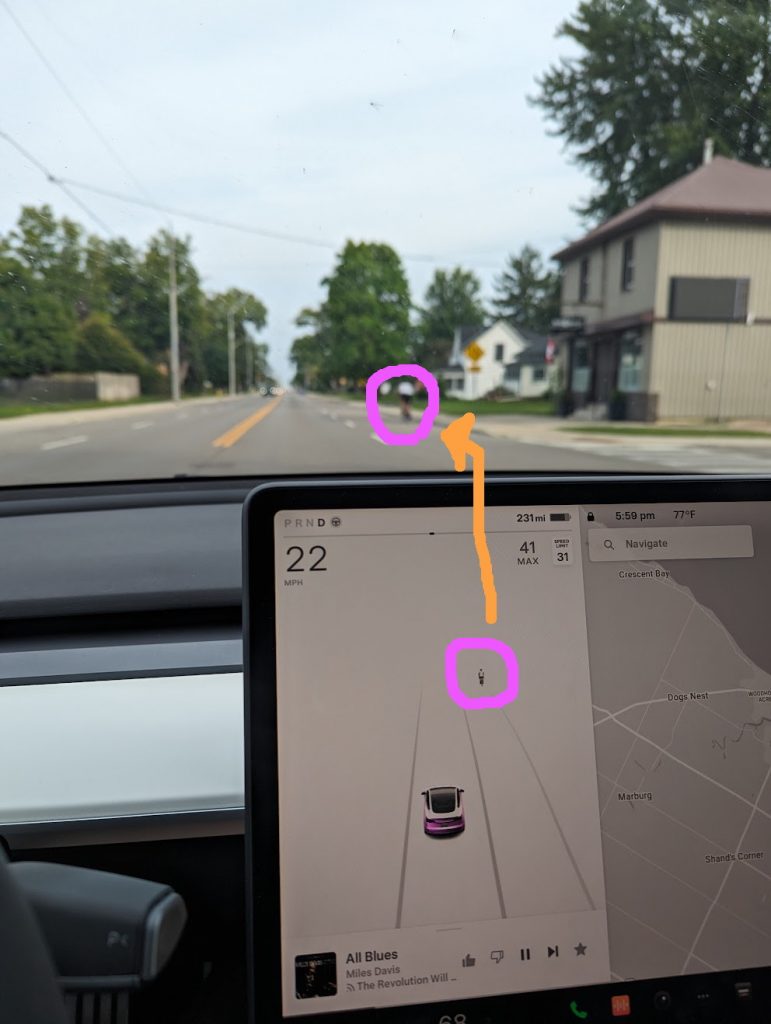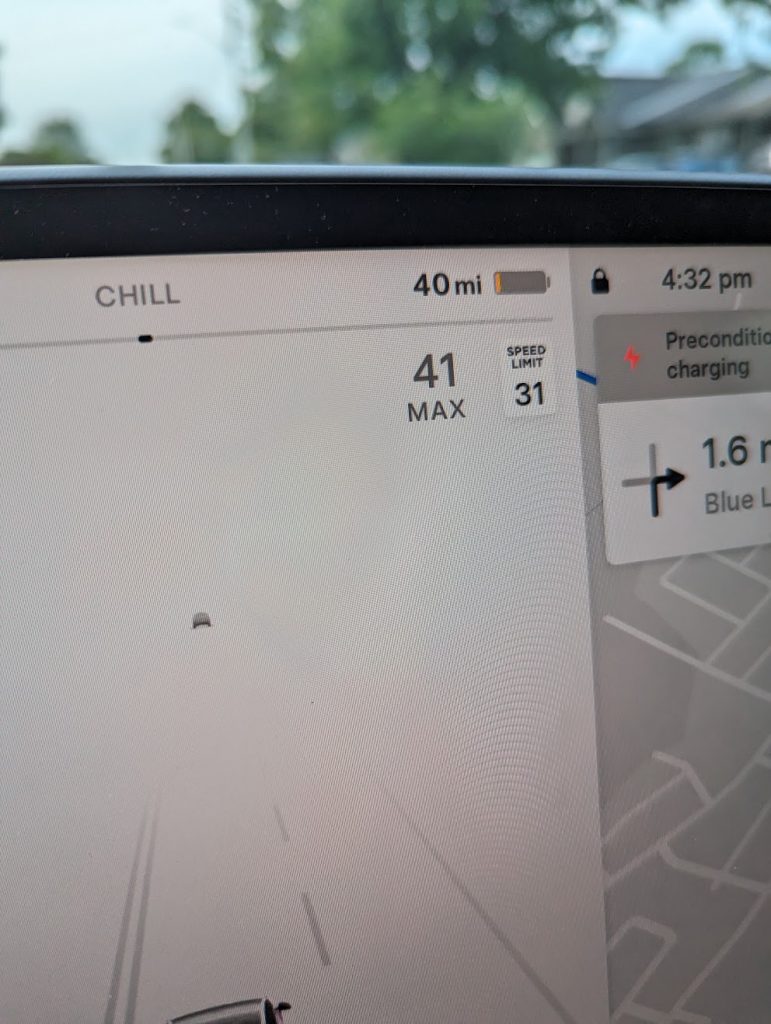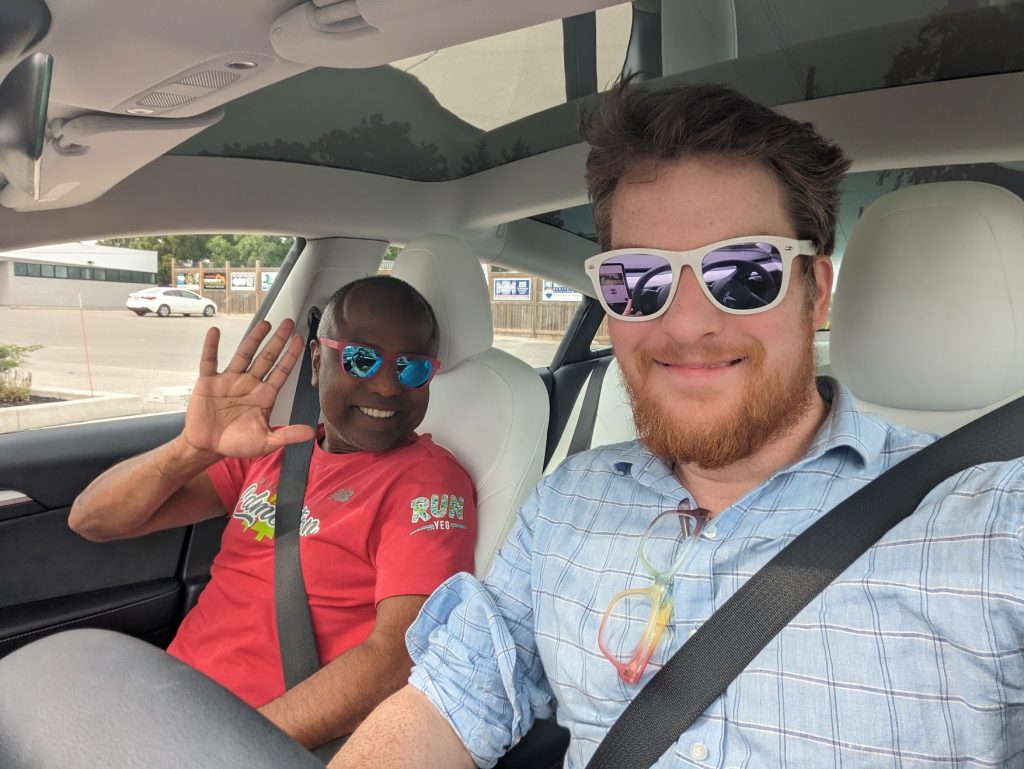Tesla: Fun To Drive. Apparent Why It’s The King Of Recalls.
I had the opportunity to drive a Tesla Model 3 for the first time, through the verdant farm country of Southern Ontario. It was a fun ride. The car feels like the designers have thought of everything! Except, well, some basic safety issues, and a number of ergonomic issues. My copilot George, himself an engineer by trade, walked me through the various settings, control panels, and features, and we rolled around in search of low-carbon electricity from Ontario’s power grid.
Tesla is one of those products that evidences a mismatch between some clearly world-class designers on one hand, and on the other, some folks who had never manufactured a car– or anything else- before. (This exact topic came up a number of times in my thesis research and explained how the Big 2.5 were able to catch up with Tesla so quickly after dragging their feet for years).
The cinema display, as I’ll call it, replaces a dashboard, similar to how a lot of cars are doing these days. From a safety standpoint, it’s a bit of a nightmare (Dave Gifford is always talking about this). It’s nearly impossible to develop muscle memory from using these, in comparison to a classic system of knobs and buttons. Sure, I told George as we sat in the parking lot by a Canadian Tire to use the Supercharger, it’s fun to be able to watch YouTube while we’re sitting here. But even with the fairly seamless user interface, it still requires that I operate a computer touchscreen while driving.

While this is increasingly the norm in a lot of cars, it’s not by any means universal. My parents’ 2020 Ford Escape Titanium HEV, for example (which I was able to buy for them at well under MSRP because no one in Michigan cares about resource conservation and it was being sold by a Big Truck dealership), has all of the bells and whistles, including LKAS, ACC, Park Assist, and any number of other frustratingly-acronym’d, fancypants features, but it also has buttons that easily guide you– or your muscle memory as you seek them with your right hand without taking your eyes off the road- as you try to turn up or down the volume, toggle seat heating, change climate controls, or what have you.
The only time I think this comparatively lower-tech setup is less desirable is when it isn’t accompanied by better and more ergonomic functionality overall. Even in my review of the F-150 Lightning, I noted that that felt a little too much like a regular F-150.
In the Tesla the seats, for example, are quite comfortable, with high head rests and good support. The steering wheel feels, well, correct. The front and rear seats are both comfortable and sort of that “just right” setup, not spacious but not cramped. In terms of the more mechanical ergonomic components, the door handles or the charging port cover– a plastic LED flip-up panel- feel, on the other hand, like they were sourced from AliBaba. Ergonomically, the car mixes brilliance with utterly lackadaisical features. The door handles can mechanically open the car door from the outside, but no such interior feature exists, instead relying on a button that activates an electronic latch release.
I’m not a car designer, but this seems stupid, especially in a world where we are increasingly unable to do anything without a steady supply of electric power. Without serious assurances– in terms of physical, mechanical, ergonomic features- that there’s actually a way to get out of the car without power, I found this prospect terrifying. I also feel a similar way about it that I do about electronic shifting on bicycles– if it ain’t broke, don’t reinvent the wheel.
I’m apparently not the only one who has had an issue with it.
There are many amazing features in this car. It seems overkill to eliminate the few remaining reminders of a more traditional motorcar just because you can.


The door handle issue is worth picking apart a bit, too, because the door handles from the outside
Tesla relies primarily on your cell phone to unlock the car. If your phone is dead or if you for whatever reason don’t have one, you can use a card that uses an RFID tag. But this again seems to be a matter of hi-tech convenience over resiliency. I usually have my phone on me, but I hate having to have it on me. The same is true for restaurants that rely on QR codes, so we can be buried in our phones instead of having actual paper menus (get off my lawn, you damn kids).
One of the arguments in favor of electric cars is that they have fewer moving parts, so there’s a lower likelihood of things breaking. Maintenance costs, they promise us, will be lower. This is at odds with Tesla’s recall record, in which the company has actually issued more recalls than it has manufactured vehicles. Most recalls aren’t a big deal, as they are based on actuarial-style wizardry to calculate the probability of something going seriously wrong (like they mention in Fight Club). Some recalls, of course, are company-ending big deals. What the prevalence of recalls indicate to me as someone who has been around the automotive sector for most of the past decade even though I’m not an engineer is that Tesla seems to manage its production the way its CEO manages his public persona– extraordinarily recklessly, with more attention paid to the “finish” rather than the “fit,” and always questing toward aggrandizement rather than improvement in value or quality.
I noticed this with the outside handles of the doors, which are levers that fit flush into the car. They feel cheap. One might argue that most car handles feel cheap these days since the demise of chrome in the 1980s or 1990s. But the same was the case with the charging port, which is hidden underneath a flip-up piece of plastic that forms part of a rear brake light. It doesn’t need to feel cheap, but it does.
Other weird thing? Autopilot always seemed to speed. Why? This is an issue I’ve encountered in discussion fora all over Al Gore’s internet, especially among urbanist circles. This was not a question of the Tesla “resuming” to a set speed, which is how it works for either regular old cruise control or adaptive cruise control, but rather the Tesla deciding to drive that speed because that’s how it was programmmed. Urbanists have noted similar things with the car running stop signs as a default mode. None of this is surprising.
We’ve seen plenty of big problems with FSD. I can’t place all of the blame with Tesla– the company rolled out most of these features while Donald Trump’s presidential administration was wasting time with klan rallies rather than formulating meaningful policy, and we will be lucky if we can catch up by the time the Democratic administration wraps up whatever its second term will look like by the end of 2028. Elon Musk stans point out that FSD kills far fewer people than, say, drivers, but as a percentage of the total number of users? Hard to say. It seems quite peculiar to me that there are almost as many cars in the United States as there are people, but there are “only” about 230 million licensed drivers. FSD has claimed 17 lives out of about 400,000 users.
Can we reasonably make a comparison between the safety of the two? Not really, because FSD and autopilot aren’t being used all of the time, even if it’s installed and set up. 46,000 people die each year on American roads out of 232 million total drivers, which means a fatality rate that is 4.7 times higher than the 17 deaths out of 400,000 users– but again, it’s not clear how much FSD is actually being used. A Quora discussion thread– Quora not always being known for robust, accurate characterization of many topics- suggested that plenty of people use autopilot, but most are using it for highway driving, for which it is best-suited. So, I’m not using that 4.7x figure because those drivers are only probably using FSD or Autopilot a small percentage of the time.
Safer or not, that doesn’t mean that I want underregulated products with door handles that depend on battery power, manufactured by a guy who is himself really quite silly and reckless. We are already trapped in the universe of the billionaires– I’d prefer to not also be trapped in their cars. Not going to be buying one any time soon, but I was glad to have the experience!




